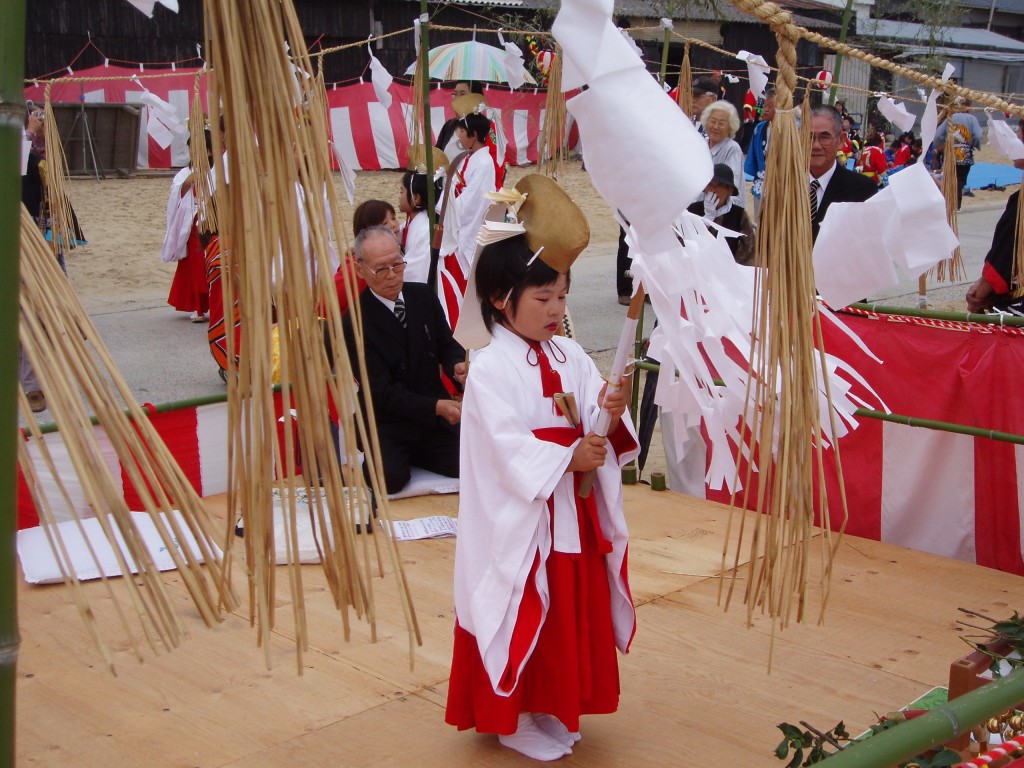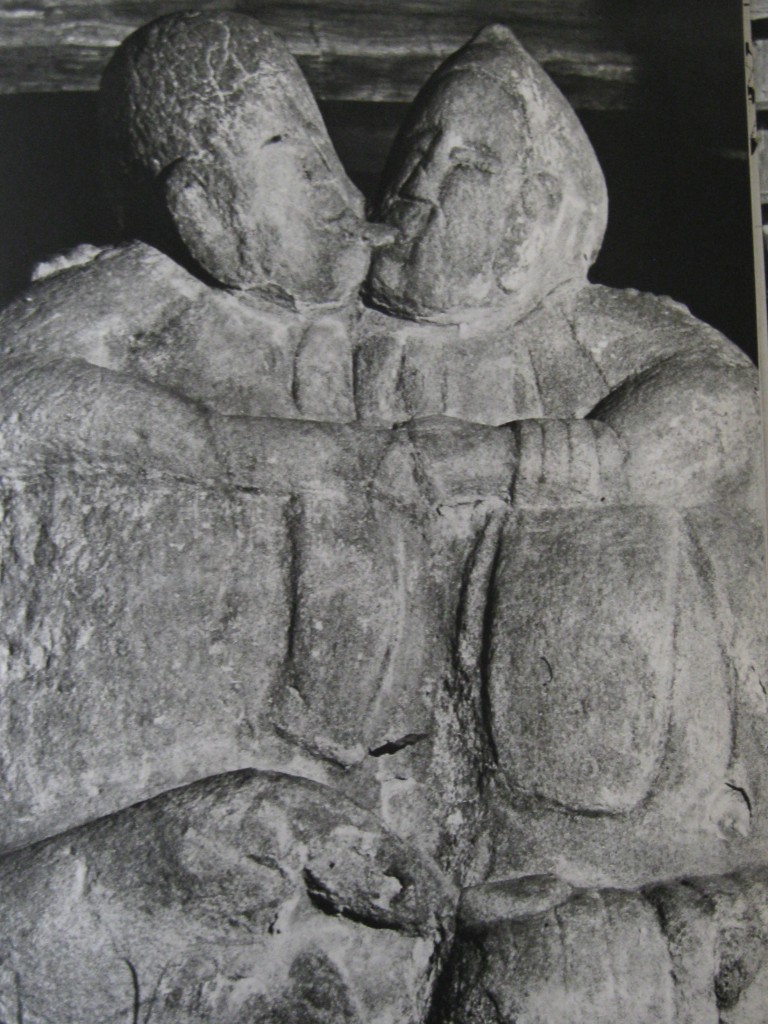
A festival on the Inland Sea conducted by islanders themselves
Folk Shinto has much to commend it. It is free of dogma, morality and hierarchy. It fosters a form of spirituality based on nature and ancestral spirits. It is open to anyone with a sense of tradition and the numinous. Moreover, it’s a product of ordinary people, rather than being imposed from on high by authorities with vested interests.
Cultivating a sense of spirituality has become an important strand of contemporary society as people grow disenchanted with the hypocrisy and divisions of mainstream religions. The popularity of meditation, freed of its religious trappings, is just one example. The boom in shamanism is another.
In the song ‘Imagine’, John Lennon who took an interest in Eastern spirituality sang, ‘Imagine there’s no countries/ It isn’t hard to do/ Nothing to kill or die for/ And no religion too.’ It showed a distaste for the frictions and wars fostered by religions, which seek to impose their own version of ‘the truth’. The role of State Shinto in WW2 is an unfortunate reminder of the way in which nationalists can all too easily exploit religion.

Dosojin fertility statues were once common across Japan
It’s a theme taken up in The Death of Religion and the Rebirth of Spirit by Joseph Chilton Pearce. A leading thinker in spiritual matters, he writes with expertise in the fields of neuroscience, cultural anthropology and developmental psychology. “In this remarkable book Joseph Chilton Pearce goes to the very memetic ‘DNA’ of our culture and recodes it to affirm life’s potential. He masterfully helps us to release the destructive aspects of religion and modern society, while affirming the magnificent reality of the spirit and the heartful intelligence that can guide us forward,” says Barbara Marx Hubbard, president of the Foundation for Conscious Evolution.
“Folk Shinto is a Shinto faith which was customarily practiced by common people without being systematized,” states the The Shinto Online Network Association. It goes on to claim that Folk Shinto developed as a separate entity in the seventh century at the time of Emperor Temmu, when indigenous practice was first codified and underpinned by an imperial theology.
“After that, Folk Shinto gradually developed by itself forming a complex form of rituals and festivals which sometimes amalgamated even with Buddhism, Taoism and Confucianism. Among them, those which have not lost traditional forms of Shinto are considered now to be Folk Shinto.
In an agricultural community, for instance, there is a custom that rituals are performed by a lay-man without involving a priest. A member of the community (often young boy) is nominated as “Toya”, and he performs rites to worship the deity of the locality for one year under the rotation system. Another example of Folk Shinto are rites of passages of life and the year-round observances.”
Reading the accounts of early Meiji times by such commentators as Ernest Satow, W.G. Aston, Percival Lowell, Lafcadio Hearn, and B.H. Chamberlain, one soon comes to realise how very much of Folk Shinto was swept away by the Meiji ideologues, determined to strip the country of ‘superstition’ and marshal the practices into an emperor-centred, Ise-focussed ideology. The purpose was to bolster the new emperor and to make the country seem respectable in the eyes of the West. Phallicism and crude nature worship thus became embarrassing irrelevancies. Even the spiritually charged Shugendo was banned.
It was left to Yanagita Kunio (1875-1962), founder of modern folklore studies, to rescue the surviving traditions from oblivion. His lifework amounts remarkably to 31 volumes and 5 appendix volumes. He observed that “These are written with great care and dedicated as always with wishes for providence from Suzu no Mori, the tutelary deity (ujigami) of my hometown, and from a humble Shinto scholar I greatly respect, none other than the spirit of my late father Matsuoka Yakusai.”
The great achievement of Yanagita, for which he deserves wider recognition, is that he redirected attention away from the ruling élite and restored commoners to the heart of history. He left us with an account of just how varied Japanese spirituality was in times past, deeply syncretic in form and localised in practice. It shows too the richness of a Shinto world that existed outside the confines of the modern shrine system, which was invented and imposed by Meiji-era officials.
 |
For more about Yanagita Kunio above, see his Wikipedia page here or Gabi Greve’s piece for World Kigo here.

Thank-you for another interesting post and valuable reference book John. It is somewhat mind-boggling to consider how many changes Japan has been through since Commodore Perry came with his ships in the 1850s. I wasn’t aware of how important hemp was in the past for example, until you wrote about it recently. The change in usage of hemp seems a minor one compared to some of the others I’m learning about. Firstly during the Meiji Restoration and then after WW2. Remarkable really.
Thank you for the feedback. The Meiji Restoration of 1868 represented a new start for the country in so many ways, and I don’t think most people are aware of how much Shinto as we know it dates from that time. Helen Hardacre’s book on ‘Shinto and the State’ is very revealing in this regard. Japan Focus in an article by David McNeill has this to say: “Many of Shinto’s earthy, animist rituals were tied to a love of nature and tradition, anchored around festivals and ceremonies honoring ‘kami’ (gods) found in all aspects of life. After the Meiji Restoration of 1868, Shinto was retooled for the modern, bureaucratic state. The first reformists purged Buddhism, made Shinto a state religion and elevated the emperor to head of state, making him the divine link in an unbroken chain going all the way back to the sun goddess. As such, the religion became inextricably bound up with the rise of Japanese nationalism and its central tenets. The emperor had a divine right to rule Japan, which was superior to other nations. Millions of Japanese children were taught these supremacist beliefs, fuelling the clash with foreign imperialisms and Asian neighbors.”
Great piece, have a nice golden week!